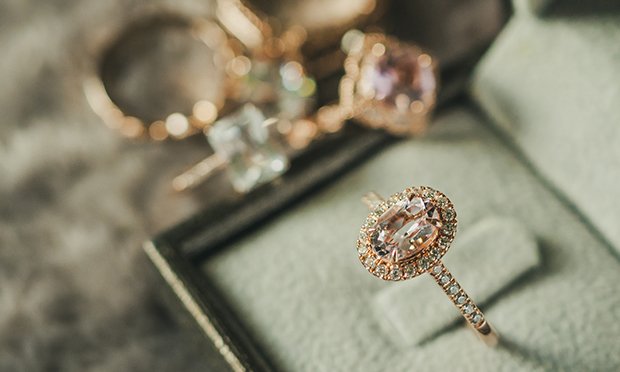 A key aspect of any jewelry coverage is documenting the type of jewelry, the specifics of the setting and the quality of the stone. (Photo: Kwangmoozaa/Shutterstock)
A key aspect of any jewelry coverage is documenting the type of jewelry, the specifics of the setting and the quality of the stone. (Photo: Kwangmoozaa/Shutterstock)
The jewelry market is expected to grow from $279 billion in 2018 to $480.5 billion by 2025, almost doubling in seven years. While the average cost of an engagement ring in 2019 was $6,350, many spend more on that for such a significant piece of jewelry. The presence of online jewelry sellers, such as Blue Nile or James Allen, make purchasing expensive jewelry easy, and Jewelry Television (JTV) makes buying less expensive jewelry even easier.
|Loss claims
Jewelry is easily lost or stolen, and on the standard homeowners policy is covered for named perils only, with a limit of $1,500 for stolen property. The property can be scheduled for additional premium for open perils coverage, with wear and tear, insect or vermin damage, war, warlike acts, nuclear weapons, and nuclear hazard being excluded perils. This is not the only available option, however. There are specialty policies designed to cover only jewelry with staff trained in gemology who can work with an insured's jeweler to replicate the missing or damaged piece.
Recommended For You
Want to continue reading?
Become a Free PropertyCasualty360 Digital Reader
Your access to unlimited PropertyCasualty360 content isn’t changing.
Once you are an ALM digital member, you’ll receive:
- Breaking insurance news and analysis, on-site and via our newsletters and custom alerts
- Weekly Insurance Speak podcast featuring exclusive interviews with industry leaders
- Educational webcasts, white papers, and ebooks from industry thought leaders
- Critical converage of the employee benefits and financial advisory markets on our other ALM sites, BenefitsPRO and ThinkAdvisor
Already have an account? Sign In Now
© Touchpoint Markets, All Rights Reserved. Request academic re-use from www.copyright.com. All other uses, submit a request to [email protected]. For more inforrmation visit Asset & Logo Licensing.







